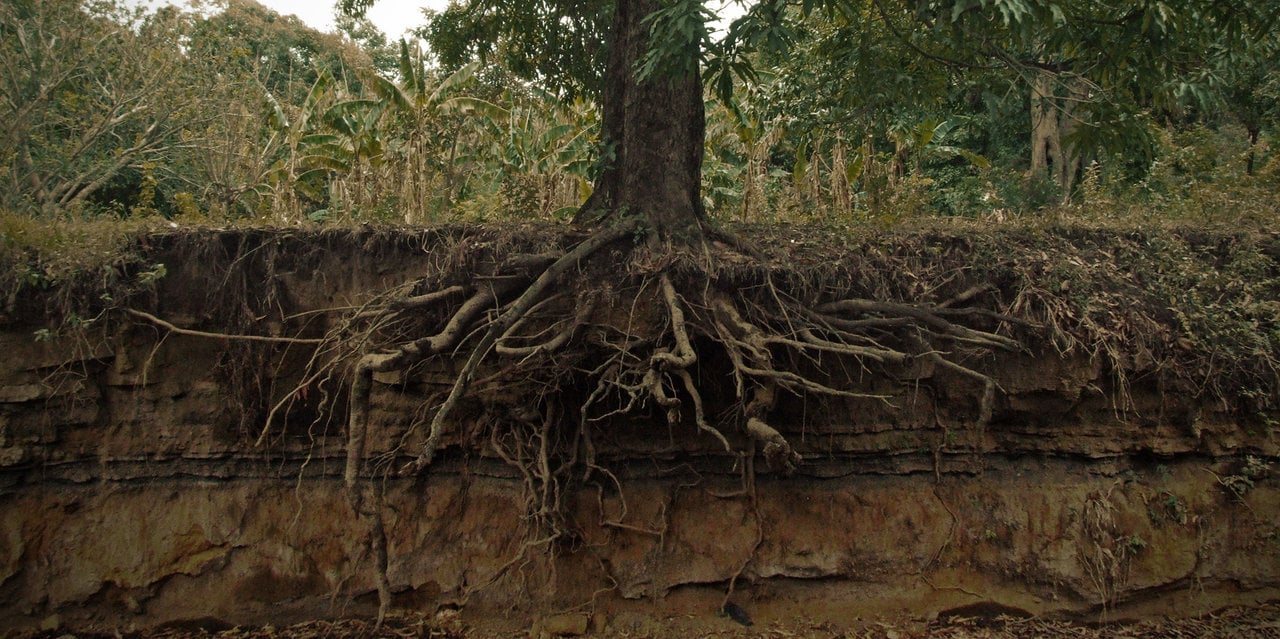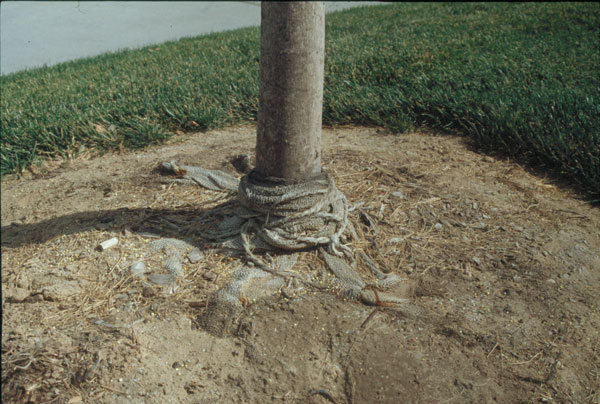To remove a tree root ball, you will need to dig around it and use a combination of cutting tools and physical strength to loosen the roots from the soil. Removing a tree root ball requires careful excavation and cutting to ensure the tree is safely uprooted without harming any surrounding structures or plants.

Credit: www.lawnstarter.com
When it comes to removing a tree root ball, it can be a challenging task that requires some careful planning and physical effort. Whether you need to remove a tree that has died or is causing structural damage, properly removing the root ball is essential.
By following the right steps and using the correct tools, you can safely remove a tree root ball without causing any additional damage. We will guide you through the process of removing a tree root ball, ensuring that you are well-prepared to tackle the task at hand.
Understanding The Tree Root Ball
Tree root ball is an essential part of a tree’s structure, consisting of roots and soil. Removing it is important to prevent future growth and potential damage. By understanding what a tree root ball is, you can effectively remove it.
A tree root ball is a cluster of roots packed together, surrounded by soil. It is crucial to remove the root ball when you are removing a tree, as leaving it behind can lead to new shoots and growth. Additionally, removing the root ball ensures that there are no obstructions for future projects or planting in the same area.
By taking proper precautions and using the right tools, you can safely and effectively remove a tree root ball.
Assessing The Tree Root Ball
Assessing the tree root ball involves identifying its size and depth. You can start by examining the surrounding soil condition. Look for any signs of compacted or disturbed soil. Assessing the root ball is crucial as it determines the removal process.
It helps you understand the extent of the tree’s root system and plan accordingly. By evaluating the size and depth, you can determine if it is necessary to use heavy equipment or if manual removal methods will suffice. Understanding the root ball’s characteristics ensures a smooth and successful tree removal process.
Tools And Materials Required
In order to remove a tree root ball, you will need a set of essential tools and materials. These include shovels, an axe or chainsaw, a root saw or reciprocating saw, loppers or pruning shears, safety goggles and gloves, as well as a wheelbarrow or tarp.
The shovels are important for loosening the soil around the root ball, while an axe or chainsaw is helpful for cutting larger roots. A root saw or reciprocating saw can be used to sever stubborn roots, while loppers or pruning shears are handy for cutting smaller ones.
Safety goggles and gloves are crucial for protecting yourself during the process. Lastly, a wheelbarrow or tarp will make it easier to remove the root ball from the excavation site. With these tools and materials, you can effectively remove a tree root ball from your property.
How to Remove a Tree Root Ball : Step by Step Guide
Removing a tree root ball requires several steps. First, clear the area around the tree to avoid obstacles. Next, prune branches and foliage for easier access. Then, cut through larger roots carefully, using proper tools. Afterward, loosen the soil around the root ball to expose it.
When lifting the root ball, be sure to use appropriate lifting techniques to prevent injuries. Finally, transfer the root ball to a wheelbarrow or tarp to transport it safely. Remember to exercise caution throughout the process to avoid damaging the tree or surrounding structures.
By following this step-by-step guide, you can successfully remove a tree root ball without any hassle.
Dealing With Large Or Difficult Tree Root Balls
Dealing with large or difficult tree root balls can present a significant challenge. Especially when faced with exceptionally large root balls, it’s crucial to employ effective removal strategies. One common concern is handling root balls in confined spaces. In such cases, careful planning and execution are paramount.
It’s important to assess the available space and determine the most suitable method for removal. For example, using heavy machinery like an excavator may not be feasible in narrow areas. Instead, relying on manual techniques such as digging and cutting may be more practical.
By employing the right strategies and tools, it is possible to successfully remove tree root balls, even in challenging circumstances.
Disposing Of The Tree Root Ball
Removing a tree root ball can be a challenge, but disposing of it doesn’t have to be. Consider recycling options such as mulching or composting, which are eco-friendly ways to repurpose the root ball. By breaking down the roots into organic matter, you can enrich your garden soil or make nutrient-rich mulch for your plants.
Another creative way to repurpose the root ball is by turning it into a unique garden feature, like a planter or a decorative element. With a little imagination, you can transform the root ball into something beautiful and functional. So, rather than just discarding it, explore these recycling options and find a new purpose for the tree root ball.
Safety Precautions And Tips
Removing a tree root ball requires caution and proper safety gear. Before starting the process, make sure you wear protective clothing, including gloves, goggles, and sturdy footwear. It is important to avoid common mistakes that can lead to accidents. First, always assess the stability of the tree and its root system before attempting removal.
Use the right tools, such as a shovel or an ax, to carefully cut and loosen the roots from the surrounding soil. Take breaks when needed to avoid fatigue, as it can lead to errors and accidents. Additionally, be mindful of any underground utilities or structures that may be affected by the removal process.
By following these safety precautions and tips, you can safely remove a tree root ball without any issues.
Conclusion: Finishing Touches And Post-Removal Care
Filling the hole left by the root ball is an essential step in the tree removal process. It helps restore the original ground level and ensures stability in the surrounding area. Start by adding topsoil to fill the hole and create a smooth surface.
Pat down the soil gently to eliminate any air pockets. Once the hole is filled, water the area thoroughly to settle the soil. Pay attention to the care of the remaining trees to prevent damage from heavy machinery or soil compaction.
Avoid placing heavy objects or vehicles over the filled area to maintain its integrity. By following these steps, you can complete the tree removal process with the necessary finishing touches and ensure proper post-removal care for the surrounding area.
Frequently Asked Questions Of How To Remove A Tree Root Ball
How Do You Get Rid Of A Large Tree Root Ball?
To remove a large tree root ball, follow these steps: 1. Dig around the root ball using a shovel and expose the roots. 2. Cut the roots with a pruning saw or an axe, starting from the outer edge and working inward.
3. Use a root grinder or a backhoe to remove the root ball from the ground. 4. Dispose of the root ball or repurpose it as desired, ensuring it does not pose any safety hazards.
How Do You Loosen A Tree Root Ball?
To loosen a tree root ball, gently dig around the root ball using a shovel or garden fork.
How Do You Get A Root Ball Out Of The Ground?
To remove a root ball from the ground, carefully dig around the base of the plant and pry it loose.
What Is The Best Way To Remove Tree Roots?
Remove tree roots by cutting them close to the trunk and digging around to expose and cut any remaining roots.
Conclusion
Removing a tree root ball can be a challenging task, but with the right tools and techniques, it is achievable. By following the steps outlined in this blog post, you will be able to successfully remove a tree root ball and restore your landscape.
Remember to carefully assess the size and location of the root ball before proceeding, and use the appropriate equipment such as a shovel, axe, and saw. Cutting away the surrounding soil and exposing the roots gradually will make the process easier and prevent damage to nearby structures.
It is important to exercise caution throughout the removal process, ensuring your safety and the safety of others. Once the root ball is fully removed, you can fill the hole with soil and replant or rework the area as desired.
With patience and persistence, you will be able to effectively remove a tree root ball and enjoy a well-maintained landscape.

